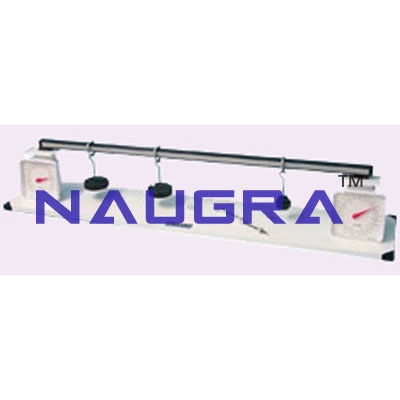- Civil Lab Mechanical Lab Engineering Lab Equipments
- sales@didacticlabequipments.com

CAT NO: DIDACTICNLE-Export-056024
Forces On A Beam Apparatus Engineering Lab Training Systems.
Features
Low cost, effective teaching.
Self-contained.
Bench mounted.
Direct measurement of reactions by
scales.
Loads and supports can be placed in
any position.
Practical verification of equilibrium of
vertical force or moments.
Simply supported beams or levers.
Three year warranty.
Range of Experiments
Experimental determination of the reaction forces in the supports of a simply supported beam under various loadings.
Measurement of loads and moments on a lever.
Comparison with calculated results and validation of the principle of equilibrium.
Description
A
horizontal length of material with a vertical load system is called a
beam. It is one of the most basic engineering ways of supporting a load.
External forces such as the applied loads and the beam support
reactions have to be in equilibrium. Given a loading system, the support
reactions can be calculated from force and moment equations.
This
apparatus is designed for simple experiments and demonstrations on
simply supported beams. Two scales act as supports and enable reactions
to be read directly. Two movable load hangers allow loads to be put in a
number of positions.
Levers can be investigated by placing the
beam across one of the scales. Different leverage ratios can be set up
using an adjustable tie rod which locates in one of three alternative
positions on the base plate. The force in the rod is measured by a
linear spring balance.
This equipment is part of a range designed
to both demonstrate and experimentally confirm basic engineering
principles. Great care has been given to each item so as to provide wide
experimental scope without unduly complicating or compromising the
design. Each piece of apparatus is self-contained and compact. Setting
up time is minimal, and all measurements are made with the simplest
possible instrumentation, so that the student involvement is purely with
the engineering principles being taught. A complete instruction manual
is provided describing the apparatus, its application, experimental
procedure and typical test results.
